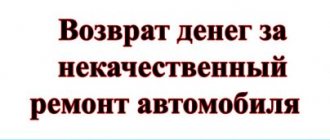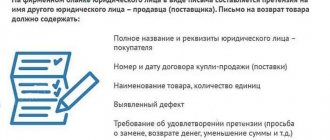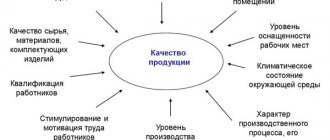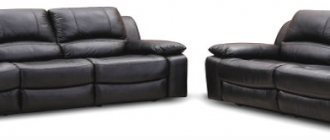Quite often, the latter makes justified or unfounded claims against the medical organization that provided medical services to the patient. This may be caused by the patient’s dissatisfaction with the quality, timing, final cost of medical services provided (and other reasons). Also, a patient’s resentment regarding any personal relationship with a doctor or other clinic staff may be the cause of a conflict between the patient and the medical organization.
However, when a patient’s claim is received by a medical organization, the reasons and grounds for the conflict are already secondary; for the medical organization, the need to consider and respond to the claim comes to the fore.
This article will discuss issues related to responding to a patient's complaint.
Preparing a response to a patient’s complaint
Based on the decision of the medical commission, documented in the protocol, the patient is provided with an appropriate response, in which options for resolving any disagreements may be proposed. The response to the patient’s complaint is signed by the head of the medical organization.
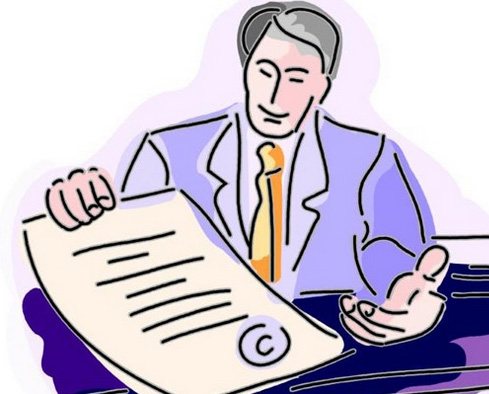
Active detection of system complaints
Having become familiar with the main complaints, the doctor, as stated, should ask the patient about his other sensations in order to get an idea of his condition as a whole. Additional questioning should include information about the most important functions of the nervous system, cardiovascular system, respiratory system, digestion, urination, movement organs, etc.
This question should concern such phenomena as weakness, malaise, fever, chills, sweats, headaches, various other pains, dizziness, poor sleep, visual and hearing disturbances, irritability, palpitations, shortness of breath, cough, disorders of appetite, swallowing, bowel movements , urination, nausea, belching, vomiting, bloating, etc. When questioning patients, it is very important for a doctor to be able to get an idea of their state of mind and their personality. It is necessary to find out the characteristics of the patient’s reaction to the everyday and professional environment around him, to certain events in his life. It is necessary to become familiar with his relationships with people, with his mental make-up, with his emotional properties, with the speed and depth of mental perception.
Claim consideration period
The RF Law of 02/07/1992 No. 2300-1 “On the Protection of Consumer Rights” (hereinafter referred to as the Law of the Russian Federation) applies to the relationship between the patient and the medical organization. This law provides for a ten-day period for satisfying individual consumer requirements, thus, the period for consideration of most claims based on the PPA (about poor-quality provision of medical services, about the provision of medical services with shortcomings, including significant ones, about violation of the patient’s right to receive information about medical services , about violation of the right to safety of services provided, etc.) should be no more than 10 days (Article 31 of the Law of the Russian Federation).
This period is calculated from the moment the patient’s claim is received. The time period for responding to a claim does not include the time period for delivery of a letter with a response by the postal service. In accordance with the rules of office work, any correspondence (documentation) received by the organization is advisable and necessary to be registered in the journal of incoming documentation. Thus, the medical organization must also register the received claim in the appropriate journal.
Competence of Roszdravnadzor and its territorial bodies when considering patient complaints
The Regulations on the Federal Service for Surveillance in Healthcare were approved by Decree of the Government of the Russian Federation of June 30, 2004 No. 323.
According to the Regulations, Roszdravnadzor is the federal executive body exercising control and supervision functions in the healthcare sector.
First of all, it is important to understand that Roszdravnadzor carries out state control over the quality and safety of medical activities, including:
- carries out inspections of compliance by medical organizations with the rights of citizens in the field of protecting the health of citizens, including the accessibility of infrastructure facilities and services provided in this area for people with disabilities;
- conducts inspections of the application by medical organizations of procedures for the provision of medical care and standards of medical care;
- carries out inspections of compliance by medical organizations with the procedures for conducting medical examinations, medical examinations, medical examinations and medical examinations;
- carries out inspections of compliance by medical organizations with requirements for the safe use and operation of medical devices and their disposal (destruction);
- conducts checks of compliance by medical workers, heads of medical organizations, pharmaceutical workers and heads of pharmacy organizations with restrictions applied to them when carrying out professional activities in accordance with the legislation of the Russian Federation;
- carries out inspections of the organization and implementation of departmental control and internal control of the quality and safety of medical activities, respectively, by federal executive authorities, executive authorities of constituent entities of the Russian Federation and bodies, organizations of state, municipal and private healthcare systems;
- conducts test purchases in order to verify compliance by medical organizations with the procedure and conditions for the provision of paid medical services.
In addition, Roszdravnadzor is authorized to conduct federal state supervision in the field of circulation of medicines for medical use, state control over the circulation of medical devices, state control over activities in the field of circulation of biomedical cell products, control over the activities of medical organizations providing psychiatric care and other control activities.
The main powers of Roszdravnadzor as a body exercising state control in the field of health protection are enshrined in Article 86 of the Federal Law of November 21, 2011 No. 323-FZ “On the fundamentals of protecting the health of citizens in the Russian Federation”:
- issuing mandatory orders in case of detection of violations of the law;
- holding medical organizations and pharmaceutical organizations and their officials accountable for violation of legislation;
- drawing up protocols on administrative offenses in the field of health protection, circulation of medicines, considering cases of these administrative offenses and taking measures to prevent such violations;
- sending materials related to violations of mandatory requirements to the authorized bodies to resolve issues of initiating criminal cases based on crimes;
- filing lawsuits, statements of violations of the law and participating in court hearings.
Roszdravnadzor also, in accordance with the Decree of the Government of the Russian Federation dated November 21, 2011 No. 957 “On the organization of licensing of certain types of activities,” exercises licensing control over licensees (with the exception of licensees who have submitted applications for renewal of licenses), powers to suspend, renew and cancel licenses for medical, pharmaceutical activities and activities related to the circulation of narcotic drugs, psychotropic substances and their precursors, and the cultivation of narcotic plants.
Receipt by the licensing authority of appeals and statements from citizens about facts of gross violations by the licensee of licensing requirements in accordance with clause 2, part 10, article 19 of the Federal Law of May 4, 2011 No. 99-FZ “On licensing of certain types of activities” is the basis for an unscheduled on-site inspection of the licensee.
Thus, Roszdravnadzor and its territorial bodies are the main bodies authorized to carry out state control in the field of health protection, and licensing control bodies for most medical organizations. Citizens' appeal to Roszdravnadzor and reporting information about serious violations in the provision of medical care or gross violations of licensing requirements for medical activities may lead to an unscheduled inspection of the clinic, bringing it and its officials to administrative responsibility, as well as transferring information to law enforcement agencies if grounds for criminal liability.
Contents of the response to the complaint
Current legislation does not regulate this issue. Typically the response to a complaint contains:
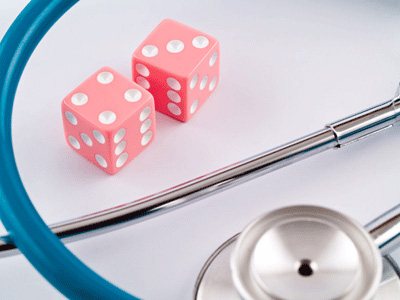
- Full name, address, contact phone number of the patient;
- name and address of the medical organization;
- The name of the document is “Response to the claim.”
- descriptive part (factual circumstances of the case): date of receipt of the claim, essence of the claim, patient’s requirements;
- motivation part: circumstances established by the medical commission; evidence on which the medical commission’s conclusions about these circumstances are based; reasons why the medical commission rejects or agrees with certain evidence;
- legal basis for the response to the claim;
- operative part: full or partial satisfaction of the patient’s claim, refusal to satisfy the patient’s claim.
- options for resolving the dispute (concluding an agreement on the settlement of claims, a proposal to conclude an agreement on conducting a mediation procedure, etc.);
- date of filing the claim, signature of the head of the medical organization (chief physician, general director, etc.);
- attachment to the response to the claim: documents confirming the validity of the response to the claim (if any).
Follow us
Subscribe to the newsletter and be the first to receive the latest and most relevant information from the Faculty of Medical Law.
By submitting an application, you agree to the terms of processing and use of personal data.
Patient's complaints
Rehabilitation program
1. Patient complaints
All complaints, according to their nature and the way they were received from the patient, are very conventionally divided into main ones - these are those that, in your opinion, constitute the subject of the disease, accompanying ones - they have no direct relation to the real disease, then complaints identified when interviewing the patient about existing organ dysfunctions and systems. When presenting complaints in a rehabilitation program, you should not make headlines; “main complaints, accompanying complaints”, etc., although it is advisable to present them in grouped form, with the main complaints being stated first, and then the accompanying ones. The complaints that you identified in the process of interviewing the patient regarding the activity of organs and systems, before recording them, should also be divided into main and accompanying ones, outlining them according to their affiliation. It should be remembered that concomitant pathology, as a rule, aggravates the severity of the main process and requires serious attention.
The curator collects complaints for the present time, and not at the time the patient was admitted to the hospital. The moment of conversation determines the present tense.
Each complaint must be described in as much detail as possible. If there are pains, then it is necessary to indicate their localization, duration, intensity, nature, connection with dyspeptic, dysuric or other disorders, with food intake or bowel movement, with any factors of everyday life or work, weather, season: indicate, influence whether pain affects the function of a particular organ or part of the body: the position of the patient during pain, the remedies usually used for pain and their effect.
The patient's other main complaints are described in detail in the same way. If the patient does not indicate accompanying complaints, then you should ask: “Does anything else bother you, besides the complaints already stated.” Thus, it is possible to find out that, for example, in addition to swelling, hyperemia, sharp throbbing pain in the area of the nail phalanx of the first finger of the right hand, the patient has thirst, itching of the skin, migrating pain throughout the body, and more often along the course of the large or small intestine, which when Further examination of the patient will reveal the concomitant disease “diabetes”. Then the third group of complaints is revealed, which the patient himself does not present, but which can only be found out through a survey of organs and systems. Previously noted complaints are no longer mentioned. The state of the central nervous system and psyche is determined: mood, sleep, well-being after sleep, headaches, irritability, tearfulness, interest in work, etc.; state of the sense organs: smell, hearing, vision, touch; respiratory organs: shortness of breath, chest pain, cough, presence, nature and amount of sputum, hemoptysis, nosebleeds; circulatory system: shortness of breath due to physical activity, swelling of the extremities, pain in the heart, etc.; digestive organs: appetite, swallowing, heartburn, belching, nausea, vomiting, pain in various parts of the abdomen, discharge through the gastrointestinal tract (character of stool, its regularity, frequency of bowel movements; urinary organs: frequency of urination, its disorders, cramps, pain during this, a decrease or increase in the amount of urine and the patient’s opinion about the possible causes of these phenomena.
2. History of the disease
In this section of the RP, it is necessary to describe in strict, chronological order the onset, course and development of the underlying disease from its very first manifestations and its possible causes until the patient is examined by the curator. The effect on the course of the disease of various types of therapeutic measures, inpatient, outpatient or sanatorium-resort treatment is described.
If the history of a traumatic injury is described, the exact time of injury, the mechanism and nature of the injury, the condition and position of the patient’s body at the time of injury, the nature of first aid and its volume, the nature of transportation, etc. are indicated.
3. Life history
The area where the patient was born, the age and health of the parents at the birth of the patient. Diseases of childhood.
Working life with a brief description of the profession and working conditions (occupational hazards, length of working day). Was there a blood transfusion and how was it tolerated? Sexual life, time of marriage (age). For men: wife’s health, number of pregnancies, births, abortions; children, their health. For women: health of husband and children; pregnancy and its course, complications; childbirth, abortion and their complications; spontaneous miscarriages; female diseases, time of last menstruation.
If the patient’s illnesses, operations, or injuries are noted, then it is necessary to indicate where the information was obtained from (from the patient’s words, from certificates, etc.), at what age they were suffered, and what impact they had on health in the future. Issues of heredity and family history: diseases in the family of malignant neoplasms, metabolic diseases, mental, venereal diseases, tuberculosis; the presence of developmental defects (anomalies), congenital diseases in the family.
Living conditions. Bad habits: smoking (cigarettes, cigarettes, pipe; amount of tobacco smoked), alcohol consumption, drug addiction, substance abuse, abuse of tea, coffee. Drug tolerance.
OBJECTIVE EXAMINATION DATA
Regardless of the nature and localization of the disease, a complete and methodical examination of the patient, all his organs and systems is carried out, sequentially, using inspection, palpation, percussion and auscultation.
The patient's condition is assessed - good, quite satisfactory, moderate, severe, very severe, agonizing. Consciousness: clear, confused, absent. Position: active, passive, forced. Facial expression: normal or does not present any painful manifestations, suffering, sad, excited.
The physique is correct, there are some irregularities (stooping, deformities). Nutrition: good, satisfactory, excessive.
Body temperature.
Skin: normal color, pale, cyanotic (indicate the places where cyanosis is most pronounced - lips, nails), icteric, sallow; pigmentation, rashes, scars, scratching, peeling, bedsores; skin elasticity, sweating. Hair and nails.
Visible mucous membranes: normal color, pale, icteric, pigmentation, ulcerations, rashes.
Subcutaneous tissue: degree of development (weak, moderate, excessive). Edema, its localization, distribution.
Lymphatic system: lymph nodes can be palpated or not (submandibular, cervical, subclavian, axillary, ulnar, inguinal). The size of the lymph nodes (do not compare with berries or fruits! Approximately or accurately express the size in centimeters). Their consistency, pain, fusion with each other and with surrounding tissues.
Muscles. General development: good, moderate, weak. Painful to touch. Tone is normal, increased, decreased. Local hypertrophy and atrophy. Bones. Deformities, visible tumors. Pain upon palpation, percussion, or axial load. Measuring limb length at various levels. Change in gait. Vicious attitudes.
Joints. Configuration: normal, deformities, contractures and ankylosis. Pain on palpation. Movements are passive and active, their volume, their measurement. Definition of Roser-Nelyatov, Schumacher lines, Briand triangle, Guter line and triangle. Symptom of patellar ballotation.
The chest and its organs:
The shape of the chest is normal, conical, barrel-shaped, cylindrical, paralytic, rachitic, chicken-shaped, funnel-shaped. Deformations (hump, etc.). Breast asymmetry, retraction of the supra- or subclavian spaces, protrusion or retraction of one side of the chest. Position of the shoulder blades: tight fit to the chest, lag.
Type of breathing: predominantly costal, predominantly abdominal, extended exhalation, extended inhalation. Breathing rhythm: correct, number of respiratory movements per minute; respiration of Kusmaul, Cheyne-Stokes, Biot. The state of the intercostal spaces during deep breathing (protrusion, retraction). Feeling the chest: painful places, swelling of the integument (specify location). Measuring the circumference of the chest at the level of the nipples during inhalation and exhalation.
Percussion of the lungs. Comparative percussion: percussion sound is pulmonary, box, tympanic, dull, dull (precise determination of the boundaries of each sound: in the vertical direction - on the clavicle, along the ribs and intercostal spaces, and in the horizontal direction - along the lines of the sternoclavicular, anterior, middle, and posterior axillary, scapular and vertebral right and left). The height of the apexes in front above the clavicle and behind - in relation to the spinous process of the VII cervical vertebra. The lower border along all lines on each side. Excursion to the edge of the lungs. Comparative definition of vocal tremors. Voice tremors unchanged, weakened, increased (exact localization).
Auscultation of the lungs is comparative. Breathing is vesicular, hard, bronchial. Amphoric: mixed indefinite, weakened, puerile, absence of respiratory noise (specify exactly the boundaries of the listening areas for each type of breathing).
The rales are dry (low-pitched, high-pitched, treble) and moist (voiced, unvoiced, small-, medium- and large-bubble). Crepitus. Localization of wheezing, the influence of coughing on its manifestation or change in quantity. Noise, pleural friction.
If necessary, spirometry is performed.
The cardiovascular system
Inspection and palpation of arteries. Arteries are unconvoluted, tortuous, soft, hard, nodular. Dance of the carotid. Pulse. Frequency is one minute. Size: full, high, small, low. Speed: normal, fast or slow. Tension: not tense, tense, soft. Dicrotic pulse. Rhythm: rhythmic pulse, arrhythmic (specify the type of arrhythmia). Blood pressure maximum and minimum.
Inspection and palpation of veins. Venous pulse (indicate where it is determined). Dilatation of the veins of the neck, chest, abdominal wall, limbs. Induration and pain when palpating the veins. For varicose veins of the lower extremities, describe the Troyanov-Trendelenburg symptom and the marching test.
Inspection of the heart area: cardiac hump, cardiac impulse (indicate where it is determined in relation to the left sternoclavicular line). Determining the location of the cardiac impulse by palpation, the impulse is intensified, stunning, lifting, limited in extent, diffuse (indicate the location again). Trembling. "Cat purr."
Percussion of the heart: right, left, upper limit of relative and absolute dullness of the heart.
Auscultation of the heart and large vessels. Tones are clear, dull, accentuated, split or bifurcated; weakening or loss of individual tones, indicating the place where all these changes were found. The rhythm is correct, cardiac activity is arrhythmic (indicate the type of arrhythmia: extrasystole, atrial fibrillation, etc.); pendulum rhythm, gallop rhythm; embryocardia. Noises: systolic, diastolic, presystolic, etc. Noise strength: sharp, weak. Timbre: soft, rough. Duration: long, short. The place where the noise is heard and its greatest intensity; places where it is held. Changes in the nature of noise when changing body position. Pericardial friction rub (where heard).
Functional tests Stange, Saabrase, after physical activity; time for normalization of pulse, respiration and blood pressure.
Digestive organs.
Mouth, Lips, their color: normal, pale, cyanotic. Dryness. Cracks. The mucous membrane of the inner surfaces of the lips, cheeks, hard and soft palate (usually pink, pale, hyperemia, pigmentation, ulcers). The gums are pale, loosened, bleeding.
Teeth: carious, loose, false, missing.
Tongue: wet, dry; unsurrounded, covered, (slightly, moderately, strongly); covered with crusts, cracks, ulcers, scars, swelling of the tongue. Raspberry tongue, lacquered tongue. Plaque color.
The pharynx is of normal color, red, swelling of the mucous membrane of the pharynx, dryness, plaque.
Tonsils are of normal size, hypertrophied, redness, swelling of the mucous membrane, plaque, purulent plugs.
Stomach. Abdomen shape: regular configuration, oval, pear-shaped, protruding, spreading. The size of the epigastric angle: acute, straight, obtuse. The abdomen is swollen, not swollen, retracted; partial retraction or retraction (asymmetry), is visible peristalsis noticeable; participates or does not participate in the act of breathing, is spared during breathing. Superficial palpation of the abdomen: the abdomen is soft or tense throughout and in certain sections, the presence of symptoms of peritoneal irritation. Deep sequential sliding palpation according to Obraztsov. Palpation of the sigmoid, descending, cecum, ascending, transverse colon, the border of the greater curvature of the stomach, liver, its lower border (the upper border is indicated on the basis of percussion).
Palpation of the spleen and intestinal segments.
Palpation of the kidneys. Definition of Pasternatsky's symptom. Percussion and palpation of the bladder area: not palpable, the height of its standing above the pubis during palpation. Auscultation of the abdomen (intestinal sounds: splashing sound, symptom of a falling drop, absence, weakening of peristalsis).
Nervous system and sensory organs. Speech is normal, scanned, stuttering and other types of dysarthria. Convulsions, paralysis, paresis. There are no sensory impairments, but there are (then indicate location). Tendon reflexes: normal, lively, weakened, not evoked, of varying strength on the right or left. Dermographism is white or red. Pharyngeal, corneal and pupillary reflexes are normal, weakened, and not evoked.
3. Rehabilitation outcomes and assessment of the degree of recovery
The degree of recovery can be assessed on a four-point scale: complete recovery; partial restoration; no change from the initial level; deterioration.
According to the materials of the International Labor Department, the following scale of the dynamics of recovery and possible outcomes of diseases and assessment of functional capabilities have been developed:
1. Restoration of functional ability to varying degrees.
1.1. Full recovery.
1.2. Partial restoration.
1.3. Compensation for limited functional recovery and no recovery.
1.4. Replacement (orthopedic or surgical) in the absence of restoration.
2. Restoring adaptation to everyday and professional life.
2.1. Developing readiness for work and everyday activities.
2.2. Occupational therapy.
3. Involvement in the labor process - determination of suitability for work, retraining.
4. Dispensary services for those being rehabilitated.
Studying the immediate and long-term results of rehabilitation measures allows us to systematically and effectively conduct the entire rehabilitation process, identifying the main tasks at each stage, and by selecting a set of adequate and effective means to achieve a successful result.
Bibliography
1. Dubrovsky V.I. Sports medicine: Textbook. for students higher textbook establishments. – 2nd ed., add. – M.: Humanite. ed. VLADOS center, 2002. – 512 p.: ill.
2. Murza V.P. Physical rehabilitation. Chief assistant. – K.: “Olan”, 2004. – 559 p.
3. Mukhin V.M. Physical rehabilitation. - K.: Olympic Literature, 2000. - 424 p.
4. Basics of physical rehabilitation: beginning. Pos_bnik. – Kirovograd: RVVKDPI im. V. Vinnichenka, 2004. – 238 p.
5. Physical rehabilitation: Textbook for academies and institutes of physical culture / Under the general editorship. prof. S.N. Popova. – Rostov n / D: publishing house “Phoenix”, 1999. – 608 p.
Rehabilitation program
Information about the work "Rehabilitation program"
Section: Medicine, health Number of characters with spaces: 22840 Number of tables: 0 Number of images: 0
Similar works
Preventive and rehabilitation programs for working with adolescents and youth
28485
0
0
..., socially and spiritually. For this purpose, the programs also offer ways to adequately respond to life situations and ways of behavior. Rehabilitation programs for working with youth A limited range of actually existing rehabilitation measures leads to the fact that minors who abuse substances drop out of the sphere of general and vocational education and lead marginal ...
Rehabilitation leisure for children at risk
88588
0
0
... -or, etc.) is the foundation on which the interaction of a specialist in working with a “difficult” (and therefore unhappy and in need of attention, acceptance and care) child is built. Rehabilitation leisure for children at risk is based on the following principles, which make it unique and different from other preventive programs and show certain differences with ordinary leisure...
Individual rehabilitation program for a disabled person
19830
0
0
...performer of the IPR. It is important to note that refusal of the organization specified in the IPR as the executor is not a refusal of the set of measures recommended by the individual rehabilitation program: according to Article 11 of the Federal Law “On Social Protection of Disabled Persons in the Russian Federation”, “a disabled person has the right to independently decide the issue of providing himself with specific technical means or type of rehabilitation.” It follows that …
Specifics of the activities of a social worker with disabled children in rehabilitation centers
52744
1
0
... their rights and freedoms. The means, forms and methods that a social worker should use when carrying out his activities with disabled children were described. Chapter 2. Content of the activities of a social worker with disabled children using the example of a rehabilitation center 2.1 Experience of a social worker working with disabled children using the example of the Saratov Regional Rehabilitation Center...
If the response to the complaint is unsatisfactory or missing
The response to the patient’s complaint may be satisfactory, unsatisfactory, or may be completely absent. Under such circumstances, the patient can use other pre-trial types of protection of rights (offer to resort to a mediation procedure for resolving a dispute, file a complaint with regulatory authorities or public organizations for the protection of patients’ rights, etc.), or immediately file a claim in a court of general jurisdiction.

Competence of Roskomnadzor in the field of protecting patients' rights
Roskomnadzor is not the most obvious control body that comes to mind for a patient to file a complaint against a medical organization. However, medical organizations process special categories of personal data - information about the health of citizens that constitutes their medical confidentiality, and it is Roskomnadzor that is the authorized body for the protection of the rights of personal data subjects.
According to Part 2 of Article 23 of the Federal Law of July 27, 2006 No. 152-FZ “On Personal Data,” the authorized body for the protection of the rights of personal data subjects considers requests from citizens regarding the compliance of the content of personal data and the methods of their processing with the purposes of their processing and makes an appropriate decision.
Based on clause 2, part 5, article 23 of the Federal Law of July 27, 2006 No. 152-FZ “On Personal Data,” Roskomnadzor is obliged to consider complaints and appeals from citizens or legal entities on issues related to the processing of personal data, and also accept within the limits of its powers to make decisions based on the results of consideration of these complaints and appeals.
Roskomnadzor has, among other rights, the following rights:
- request from legal entities information necessary to exercise their powers and receive such information free of charge;
- check the information contained in the notification about the processing of personal data;
- demand from the operator clarification, blocking or destruction of inaccurate or illegally obtained personal data;
- restrict access to information processed in violation of the law;
- take measures to suspend or terminate the processing of personal data carried out in violation of the requirements of the law;
- file claims in court in defense of the rights of personal data subjects, including in defense of the rights of an indefinite number of persons, and represent the interests of personal data subjects in court;
- send materials to the prosecutor's office and other law enforcement agencies to resolve the issue of initiating criminal cases based on crimes related to violation of the rights of personal data subjects, in accordance with jurisdiction;
- bring to administrative responsibility persons guilty of violating the law.
Thus, a patient’s appeal to Roskomnadzor with a complaint about a medical organization’s violation of the rules for processing personal data may entail an inspection of the organization, the issuance of an order to eliminate violations, administrative liability, and filing claims in court in defense of the rights of personal data subjects.
Limitation period for appealing a response to a claim
If the patient’s claim is not satisfied or not satisfied to the extent necessary, the patient may go to court “in search of the truth.”
Sometimes patients, missing the statute of limitations, have no chance of having their claims satisfied in court. This happens because the general statute of limitations is 3 years, and for the quality of medical services provided, it is even 1 year. Thus, in each case, the statute of limitations depends on the specific requirements of the patient. For example, the rules on the statute of limitations do not extend and are not applied to claims for compensation for harm caused to the life or health of a citizen. Meanwhile, a claim for compensation for harm caused to life or health, submitted after 3 years from the moment the right to compensation for such harm arose, is satisfied only for 3 years preceding the filing of the claim (Article 208 of the Civil Code of the Russian Federation).
In addition, the recognition by a medical organization of the principal debt, including in the form of its payment, does not in itself constitute evidence indicating the recognition of the patient’s additional claims (in particular, penalties, interest for the use of other people’s funds), as well as claims for compensation of losses . Accordingly, recognition by a medical organization of the principal debt cannot be regarded as a break in the limitation period for additional claims and claims for damages (clause 23 Resolution of the Plenum of the Supreme Court of the Russian Federation dated November 12, 2001 No. 15, Plenum of the Supreme Arbitration Court of the Russian Federation dated November 15, 2001 No. 18 “ On some issues related to the application of the provisions of the Civil Code of the Russian Federation on the limitation period”).
Competence of the Federal Antimonopoly Service in the field of protecting patients' rights
Compliance with consumer rights when providing paid medical services is closely related to advertising legislation, which is the main way to promote these services. However, compliance with advertising legislation is controlled by another government body - the Federal Antimonopoly Service.
The rules for advertising medical services and medicines are generally enshrined in the Federal Law of March 13, 2006 No. 38-FZ “On Advertising”. In addition to the general requirements for advertising, the law has a special article 24 devoted to advertising of medicines, medical products and medical services, methods of prevention, diagnosis, treatment and medical rehabilitation, and methods of traditional medicine.
After consideration or preliminary inspection of appeals and statements from citizens received by the antimonopoly authority regarding facts of violation of mandatory requirements for advertising, an official of the antimonopoly authority may decide to conduct an unscheduled inspection (clause 2, part 4, article 35.1 of the Federal Law of March 13, 2006 No. 38- Federal Law “On Advertising”). In this case, preliminary notification of a legal entity about an unscheduled on-site inspection is not allowed in this case.
Based on Part 2 of Article 33 of the Federal Law of March 13, 2006 No. 38-FZ “On Advertising,” the antimonopoly authority has the right to:
- issue binding orders to advertisers, advertising producers, and advertising distributors to stop violating the legislation of the Russian Federation on advertising;
- bring claims to a court or arbitration court to prohibit the distribution of advertising carried out in violation of the legislation of the Russian Federation on advertising;
- bring claims to a court or arbitration court for a public refutation of false advertising (counter-advertising);
- apply penalties in accordance with the legislation of the Russian Federation on administrative offenses;
- apply to the arbitration court to invalidate the permit to install an advertising structure;
- organize and conduct inspections of compliance with the requirements of the legislation of the Russian Federation on advertising by advertisers, advertising producers and advertising distributors.
Accordingly, patients have the right to report information about inappropriate advertising to the FAS, and the antimonopoly authority, based on the information received, can initiate an inspection of the medical organization as an advertiser.
FAS, as an antimonopoly body, also ensures state control over compliance with antimonopoly legislation. Federal Law of July 26, 2006 No. 135-FZ “On the Protection of Competition”. However, in this area, the FAS is most often approached not by patients, but by medical organizations - competitors with reports of unfair competition in the market.
Participation of the medical commission in considering the patient’s claim
In any case, when receiving a patient’s complaint against a medical organization, you should take the response to it seriously. Firstly, for any of the parties, usually “a bad peace is better than a good quarrel,” and secondly, speaking essentially, the answer must be reasoned, justified, indicating that the patient’s claim was really subject to consideration. In the future, a situation may arise that when a patient goes to court, the latter will be able to easily prove that his legal demands were not satisfied by the medical organization, that a refusal was received from it even without appropriate consideration of the claim, which may in turn lead to the imposition of a penalty by the court. The response to the patient’s claim must be medically substantiated; for this purpose, the legislator assigned this function to the medical commission of the medical organization. We must also not forget about the need to maintain the patient’s medical confidentiality, evaluate the possibility of providing an answer not to the patient himself, but to his representatives or other persons, and the possibility of attracting independent experts to consider the claim. In the future, these violations on the part of the medical organization may lead to additional grounds for a serious complaint on the part of the patient.

Algorithm for handling patient complaints and claims
To work with citizens’ requests, you can create a certain universal algorithm:
- 1) During the consideration of the claim, it is necessary to study in detail the patient’s requirements, medical documentation, and determine exactly what medical care was provided to the patient. It is important to remember that medical documentation is virtually the only source of evidence in medical cases. Therefore, it must be conducted very carefully.
- 2) It is necessary to obtain explanatory notes from the employees of the medical organization who interacted with the patient. The conflict situation should be reflected as fully as possible in the documents.
- 3) Conduct a review of the complaint at a meeting of the medical commission.
- 4) Compose a written response to the patient to his complaint.
- 5) Provide for personal communication between the administration of the medical organization and the patient. Open dialogue in most cases helps resolve conflict.
Next, we can talk about the algorithm for considering different types of complaints. As practice shows, the most serious claims relate directly to medical problems, these are the so-called “medical claims”.

Read more…
In this case, firstly, it is necessary to assess the compliance of the medical care provided with the accepted algorithms and methods of treatment .
Secondly, you need to analyze medical documentation. Courts rely solely on expert opinions; Since judges are not medical specialists, they are not interested in medical subtleties. As current practice shows, what kind of conclusion the court receives from an expert is the basis on which it will make a decision. The medical documentation must reflect:
- the studies performed and their results, which confirms the usefulness of the diagnostics performed;
- all appointments, stages of treatment, intermediate examinations;
- information on informing the patient - confirmation of the necessary explanations and discussion of treatment from the planning stage to recommendations for the prevention of complications.
Thirdly, it is necessary to carefully analyze the patient's actions from the point of view of fulfilling his duties.
Finally, you need to assess the risks. In this case, it is advisable to involve a lawyer from a medical organization in the analysis of the claim, who will give an appropriate opinion and assess the possible legal consequences and the possible judicial prospects for considering this claim.
Source: Collection “PROTECTION OF DOCTORS’ RIGHTS: PRACTICUM ON TACTICS” - Union of the Medical Community “National Medical Chamber”.
doclvs.ru

